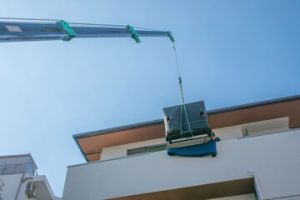Waste no longer disappears without consequence. Rubbish removal has entered a more conscious era. It now involves decisions beyond clearing debris. The focus is on sustainability, precision, and safety.

Demolition is no longer brute force alone. It is planned with digital precision and environmental care. Structures are dismantled methodically, not wrecked randomly. This reduces harm to surroundings and workers. For professional help, Call Now!
Recyclability now guides the removal process. Contractors sort materials before hauling begins. Metals, wood, and concrete are repurposed. Nothing is wasted without assessment.
Green audits are part of pre-demolition steps. They help identify reusable components. Doors, tiles, and fixtures are saved. Even soil is screened for reuse potential.
Selective demolition has replaced traditional methods. Walls and systems are removed one by one. It preserves structural integrity during renovation. This technique also generates less airborne dust.
Air quality monitoring is routine on active sites. Demolition creates fine particles that spread quickly. Sensors help adjust water sprays and filters. It ensures the air remains safe for teams nearby.
Remote-controlled equipment reduces human exposure. Machines now handle interior teardown in tight spaces. This limits injury and speeds up work. It also reaches places previously too risky.
Drones assist with site mapping. They give top-down views for demolition planning. Every phase is visualized in advance. This allows teams to work with absolute clarity.
Noise mitigation strategies have improved. Machinery is fitted with dampeners. Work hours are adjusted for community comfort. Contractors now prioritize peaceful surroundings.
Transport logistics have become smarter. Hauling schedules reduce road congestion. Loads are optimized to minimize fuel waste. Every trip counts toward efficiency and savings.
Rubbish removal has a digital side. Photos and documents track what’s hauled and where. Clients can view disposal records instantly. It builds trust through complete transparency.
Illegal dumping is tackled with tech too. GPS tags on haulers prevent route deviations. Surveillance ensures waste goes to licensed facilities. Violations are caught before they escalate.
Demolition now requires environmental clearance. Regulations focus on toxins and ecosystem impact. Teams must follow ecological guidelines strictly. Violations result in costly penalties.
Old buildings may contain hazardous materials. Asbestos, lead, and mold must be detected early. Specialists isolate these areas with care. Safe disposal prevents future health issues.
Energy efficiency starts with clean demolition. Reusing thermal insulation saves new resources. Proper deconstruction preserves green technology parts. The process helps maintain the circular economy.
Landfill diversion rates are performance metrics now. Teams aim to reduce disposal percentages yearly. This data reflects sustainable practices. It also appeals to eco-conscious clients.
Community engagement is part of the project lifecycle. Residents are informed about schedules and impacts. Feedback helps adjust timelines if needed. Collaboration creates smoother operations.
Robotics assist with concrete breaking. Machines equipped with hammers work tirelessly. They maintain uniform precision without fatigue. This speeds up foundation removal and slab clearance.
Demolition waste is now categorized onsite. Teams separate based on type, weight, and value. These sorted piles go to specialized recyclers. Each material has a unique handling process.
Mobile crushing units recycle concrete on location. Aggregates are reused in future builds nearby. This reduces transportation needs and carbon output. It creates a closed material loop.
Data from previous demolitions guide new projects. Historical trends shape safety protocols. Teams learn from past risks and delays. Insights turn into better planning tools.
Rubbish removal also supports disaster response. After floods or earthquakes, quick clearance is critical. Teams are trained to operate under pressure. They work fast to reopen roads and restore order.
Soil remediation is tied to some demolitions. Polluted land must be detoxified after clearance. Contractors treat contaminants using approved techniques. Clean land can be redeveloped safely.
Salvage operations are growing in popularity. Architectural features from old buildings are in demand. Contractors coordinate with designers and collectors. It blends waste reduction with artistic preservation.
Workforce upskilling is part of modern rubbish services. Crews train in machine operation and hazard handling. Certifications ensure proper knowledge and care. Skilled teams prevent costly mistakes.
Sustainability ratings influence demolition contracts. Clients choose firms with green credentials. It reflects a shared commitment to future-friendly practices. Ratings also improve public perception.
Demolition blueprints are 3D-modeled. These models simulate collapse patterns and sequences. They predict structural responses in real time. Planners tweak designs before a single hit is made.
Insurance providers demand high documentation levels. Before and after records are legally vital. Proper waste disposal logs support claims. Every step is archived with digital proof.
Temporary fencing and signage improve site safety. These control pedestrian traffic nearby. Visual warnings keep curious individuals away. Boundaries protect both the public and teams inside.
Portable decontamination stations are now used. Workers rinse off before leaving hazardous zones. It prevents contamination outside the site. Health risks are reduced drastically.
AI tools assist in cost estimation. They factor in material value, haul distance, and labor. This creates realistic bids without guesswork. Projects stay within the expected budget.
Waste-to-energy technologies process specific debris. Combustible rubbish turns into usable power. Contractors send qualifying waste to these facilities. It turns disposal into opportunity.
Public health concerns shape demolition permits. Dust control, water runoff, and vibration are monitored. Approval depends on mitigation plans submitted. It aligns urban development with public wellness.
Old pipes and tanks pose contamination risks. Crews cap and drain them with special gear. Liquids are tested for toxicity levels. Only then are parts removed or destroyed.
Contractors track emissions from equipment. Idling policies and machine upgrades help reduce impact. Projects aim for low-carbon milestones. Reports show environmental responsibility clearly.
The definition of waste has changed. Items once discarded are now resources. Removal plans include potential for reuse. This shift reshapes attitudes across the industry.
Pre-demolition walkthroughs spot safety issues. Engineers examine how buildings were made. Unexpected designs require modified approaches. Proper inspection prevents structural surprises.
Digital platforms connect contractors to disposal partners. Materials find the right end users faster. This accelerates clearance and reduces holding costs. The supply chain becomes more circular.
Dust suppression systems are automated now. Sensors activate water mists on demand. This balances moisture and visibility needs. It keeps air breathable without flooding the site.
Underground utility scanning is mandatory. Before digging, contractors must detect pipes and wires. Damage to infrastructure can halt progress. Accurate maps reduce these costly errors.
Climate adaptation is reshaping site practices. Projects plan for heatwaves and flooding events. Temporary shelters and drainage controls are used. Teams work safely in changing conditions.
Contractors also consult archaeologists when needed. Old sites may hide cultural artifacts. Discovery protocols guide how finds are handled. This protects history even during demolition.
Heavy equipment is now hybrid-powered. Electric excavators are being introduced gradually. They reduce noise and air pollution. Urban sites benefit from quieter, cleaner operations.
Jobsite recycling centers speed up sorting. Mini-stations categorize metal, plastic, and wood. Teams separate loads without leaving the site. It cuts down hauler trips significantly.
Project timelines are mapped with real-time trackers. Delays are predicted based on machine status. These insights prevent last-minute surprises. Planning becomes proactive, not reactive.
Weather forecasting tools guide daily operations. Rain or wind alters which tasks proceed. Teams shift focus with safety in mind. Flexibility keeps momentum strong.
Rubbish removal teams now wear smart gear. Helmets track motion and alert fatigue levels. Gloves detect vibration exposure over time. Wearables protect workers from long-term strain.
Clients demand documentation of environmental efforts. Reports show how much was recycled or reused. This adds value to the demolition process. It builds a brand of integrity and care.
Reputation in this industry hinges on execution. Timely, safe, and ethical practices define success. Each project contributes to that identity. No detail is too small to matter.
The future of demolition lies in regeneration. Every site cleared makes way for something new. The process should reflect that promise. From rubbish to rebirth, the cycle continues.
